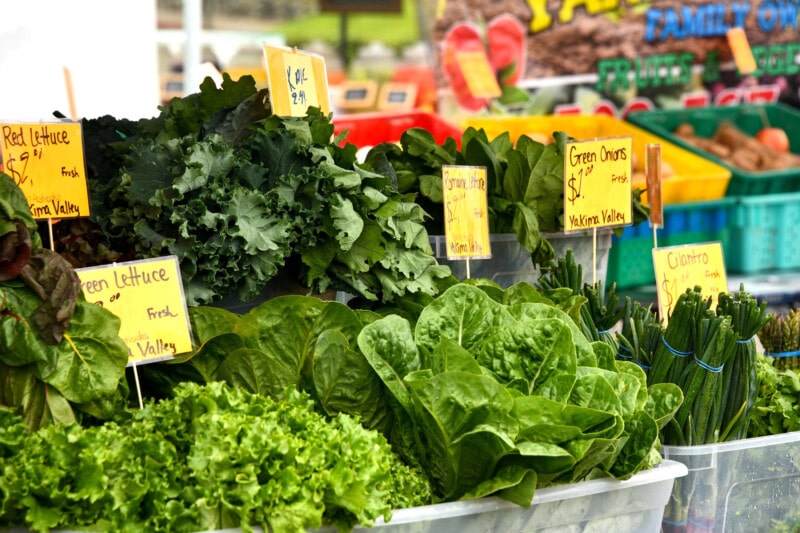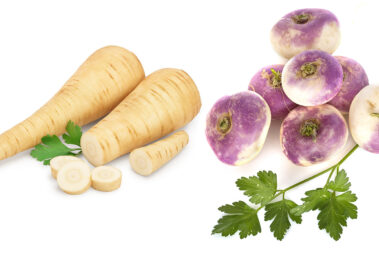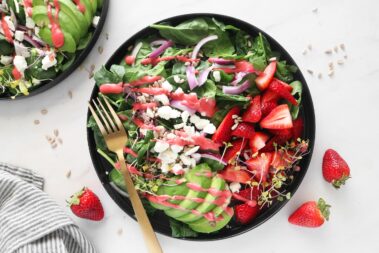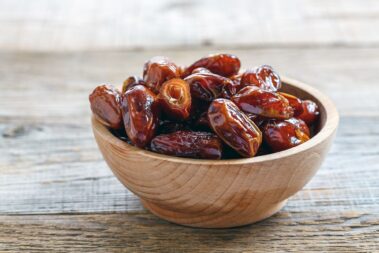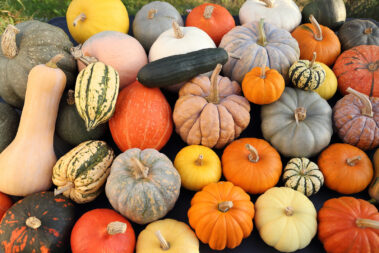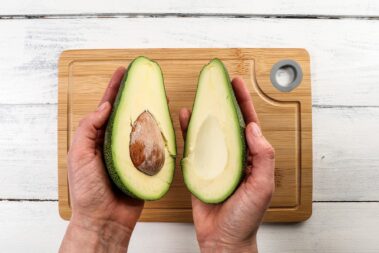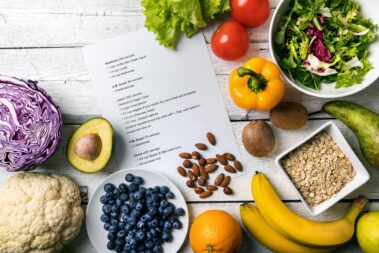Everyone knows that incorporating a salad into your daily routine is a great way to up your nutrition while keeping your calorie intake in check. But anyone who has tried this also knows how quickly eating the same old salad every day can lose its appeal.
There are a ton of different toppings and dressings you can add to a salad to help keep things interesting. But what many people often overlook when getting creative with their daily greens is the greens themselves.
There are hundreds of different lettuce varieties out there that can be incorporated into your salads. Some add spice and zing, while others add interesting textures and extra crunch.
If you’re getting bored with your daily salad, give it a flavor makeover by starting with the very essence of the salad itself. Here are 20 different types of lettuce you can use to create a fresh, flavorful, and unique salad each and every day.
Table of Contents
Different Types of Lettuce for Salads
Technically speaking, lettuce is any plant in the genus Lactuca. The most well-known lettuces, including loose-leaf, head lettuce, and romaine, are all different varieties within the species Lactuca sativa.
But speaking in culinary terms, lettuce is any leafy green that can be incorporated into salads. These greens also make great additions to sandwiches, smoothies, fresh juices, and more!
Here are 20 of our favorite lettuce-type greens worth incorporating into your meals.
1. Arugula
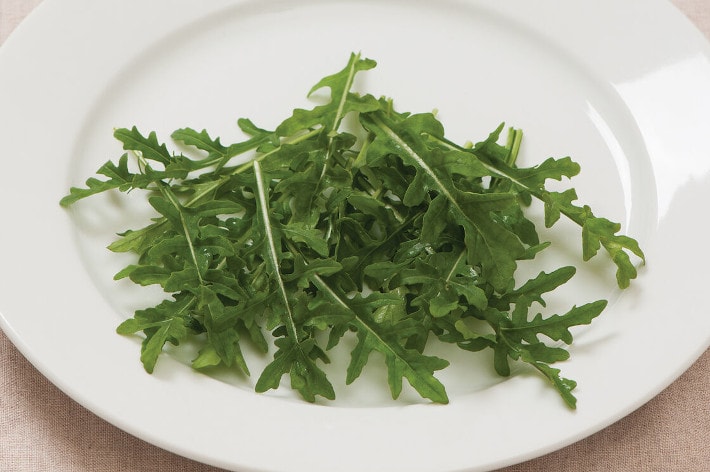
While not a true lettuce, Arugula often appears in salad mixes and as a sandwich topper. This green is thicker than any real lettuce variety and has a lower water content, giving it more of a chewy texture. The flavor is also quite distinctive. Baby arugula is peppery and tart, becoming more bitter as it matures.
Arugula is a great addition to spice up bland salads. It is also a tasty topper for savory and sweet sandwiches and burgers.
2. Baby Beet Greens
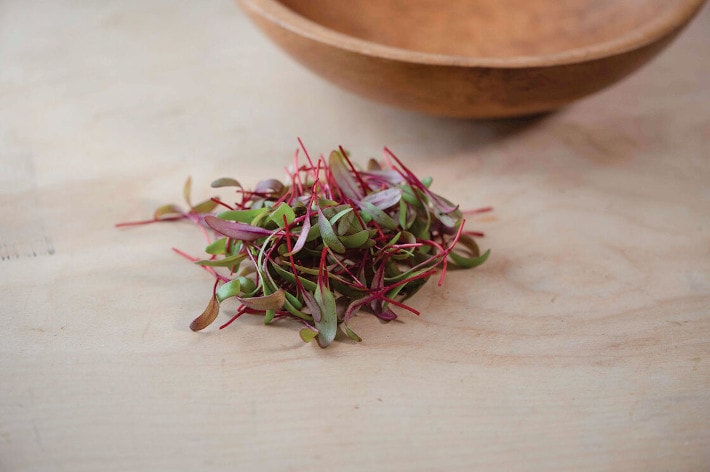
Another non-lettuce green worth adding to your salads is baby beet greens. As the name suggests, these greens are harvested from immature beets (ones that have yet to form a bulb). These greens have a sweet and mild flavor and the stems are far less bitter than those of other ribby greens like kale.
But the best reason to add beet greens to your salad? They are loaded with nutrients, including vitamins A, C, E, K, and B6, as well as calcium, iron, and magnesium.
3. Batavia Lettuce
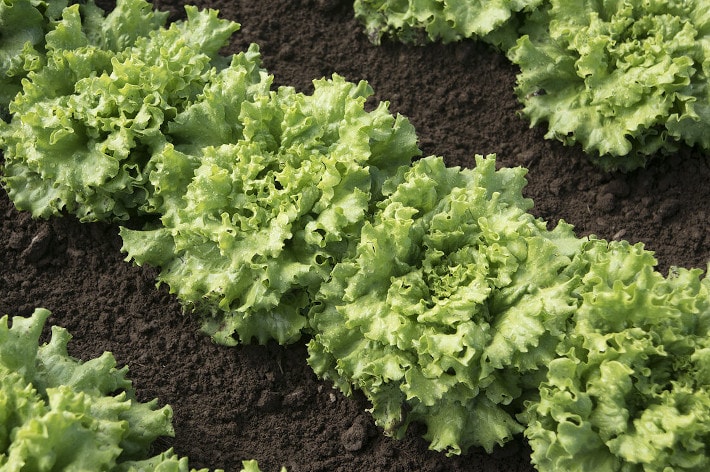
Batavia lettuce (also known as Summer Crisp lettuce) comes in a wide variety of colors and shapes. The most popular type, and the one often found in stores, is a deep lime green with ruffled, loose leaves. Batavia has a mild flavor with a slight sweetness. It is a thin lettuce with crisp ribs that will add more in terms of visual and textural appeal than it will flavor.
6. Butterhead Lettuce
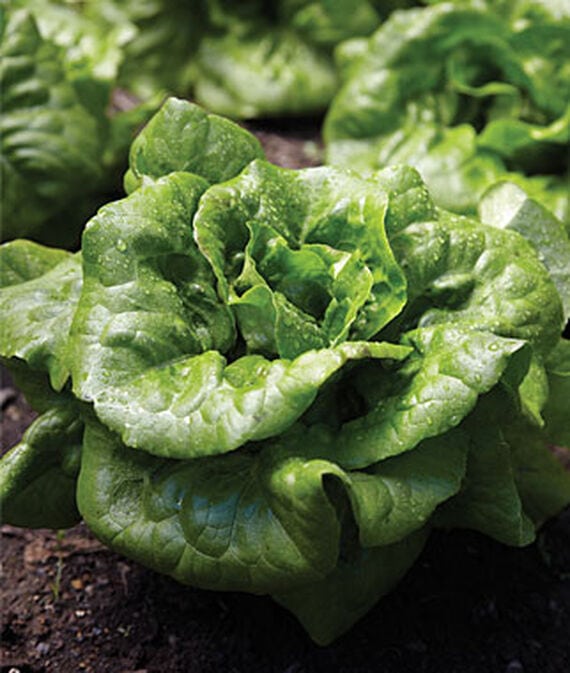
All butterhead lettuce types have soft, flexible leaves with a chewy texture. The flavor, as the name suggests, is buttery and smooth and goes very well with savory sauces and dressings. Because of their size and durability, these leaves are most often used in lettuce wraps, but are also a great choice for chopping and adding to traditional salads.
4. Bibb Lettuce
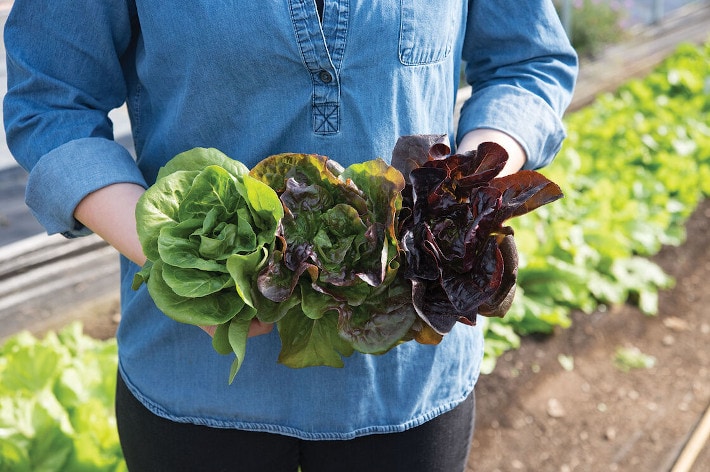
A subtype of Butterhead lettuce, Bibb lettuce has smaller leaves than the Boston variety but more flavor. Like other butter lettuces, it has wide, cupped leaves that make it a great choice for lettuce wraps and many other popular Asian dishes. Outer leaves of these loosely packed heads are buttery and soft while the small inner leaves pack a bit more of a crunch.
5. Boston Lettuce
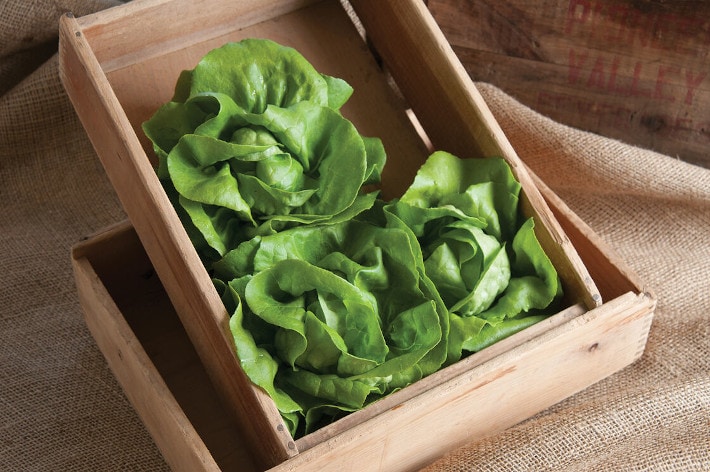
Boston lettuce is another subtype of Butterhead lettuce. It is larger and less expensive than the more delicate Bibb lettuce, but also has less flavor. It’s great when paired with robust sauces and dressings. Boston lettuce is most often used in place of tortillas and bread for low-carb sandwich and wrap options.
7. Dandelion Greens
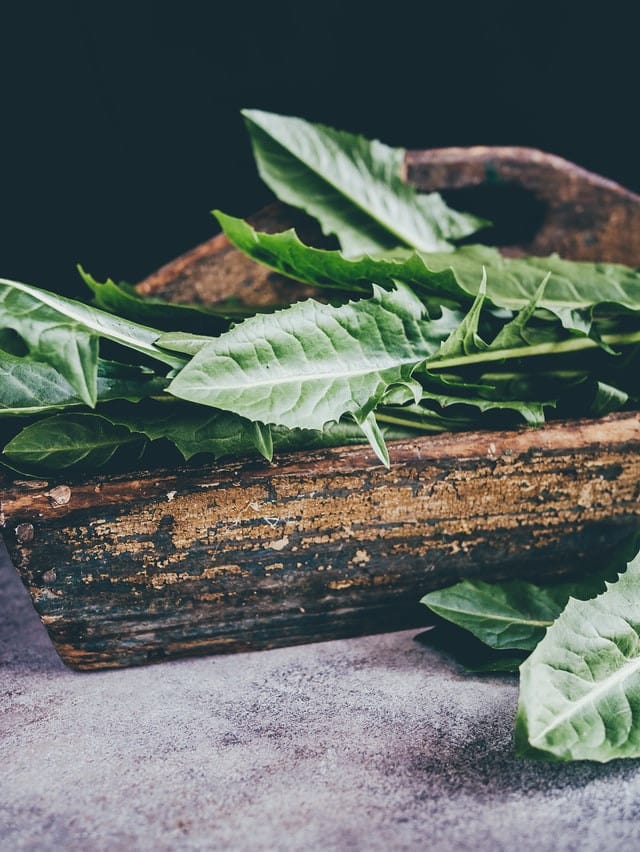
If you’ve been battling dandelions in your lawn, it may be time to put down the harmful chemicals and embrace this easy-to-grow leafy green. Not only are dandelion greens effortless to cultivate, but they are packed with nutrients and have a spicy flavor that can really dress up a boring salad. Baby leaves—those that are picked before the flower forms—are less bitter and more tender than the mature form.
8. Endive
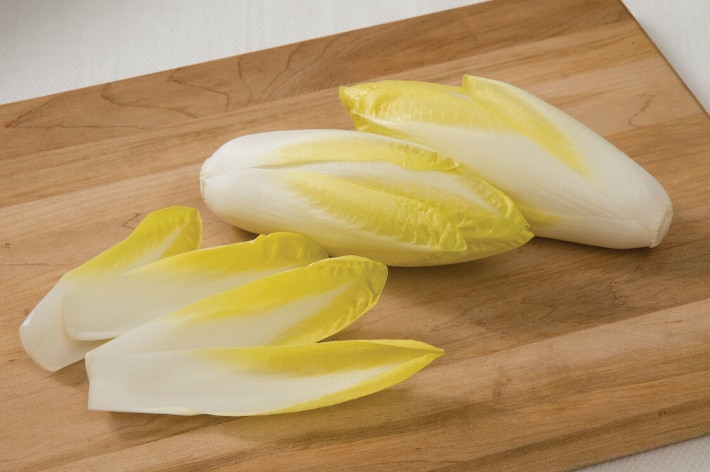
Endive is a type of leafy green that comes in many varieties from the lettuce-like broadleaf to the popular Belgian endive that looks something like an elongated head of cabbage. The latter type has a delicious crunch and lightly bitter taste that adds a lot of character to salads and is also great when sauteed.
9. Frisée
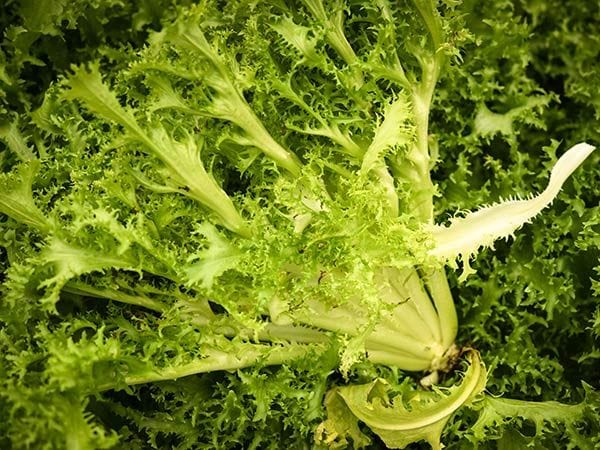
While Belgian endive is thick like cabbage, frisée is thin and curly like Batavia. Like all varieties of endive, this green has a thick, white stalk, similar to what you’ll find on chard. When used in salads, this stalk is typically discarded and only the mild, slightly bitter-sweet leaves are used.
10. Iceberg Lettuce
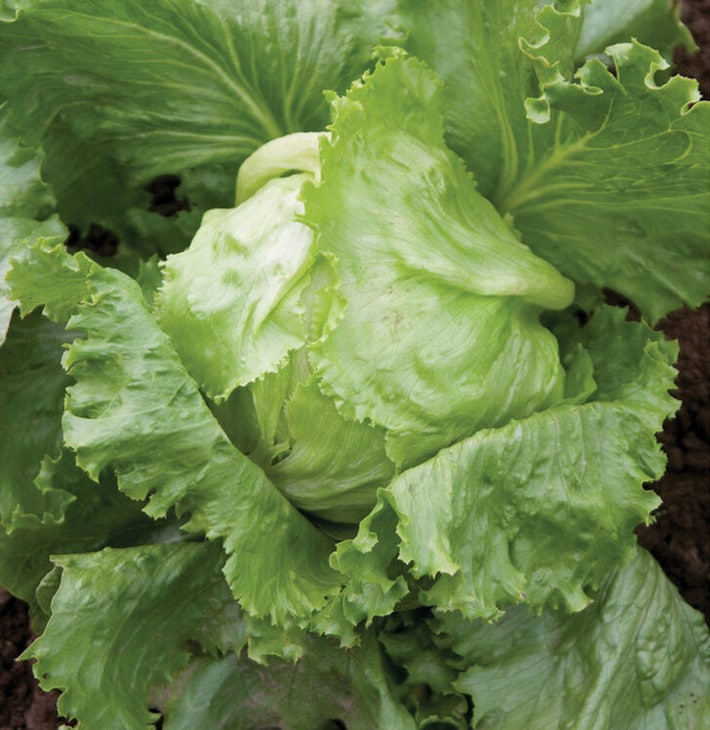
The star of most sub-par salad bars, iceberg lettuce is one type of green that most try to get away from when they start making their own salads. While we understand the sentiment—we’ve all had to choke down a chunky, off-colored iceberg salad in our lives—this popular lettuce variety shouldn’t be entirely forgotten.
Iceberg lettuce has a thick, crunchy texture that can add a lot to a fresh dish. This is especially true when paired with a savory dressing like vegan blue cheese. This type of lettuce is not as nutritionally dense as other varieties, but it does have a unique texture. Just make sure you cut it and eat it fresh to avoid those salad bar flashbacks.
11. Kale
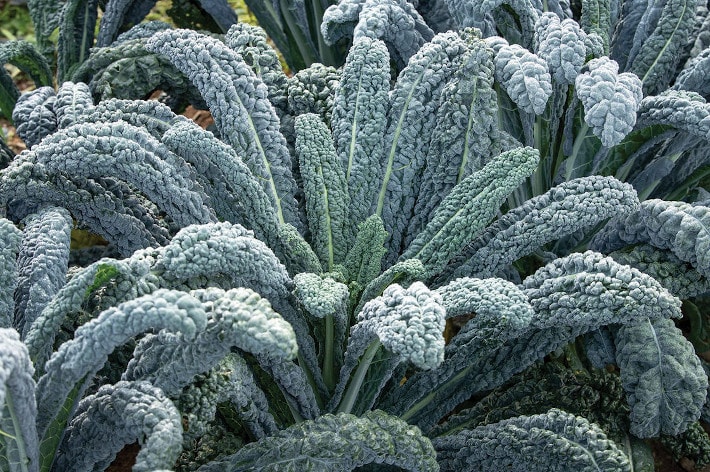
Kale is more closely related to cabbage than it is to any true lettuce, but that doesn’t mean it shouldn’t be included in your salad. This thick, chewy green is packed with nutrients and has a mild to slightly bitter flavor, depending on how mature the leaves were when picked. Kale pairs well with sweet dressings and toppers, including dried cranberries, candied almonds, and coconut flakes.
12. Lamb’s Lettuce
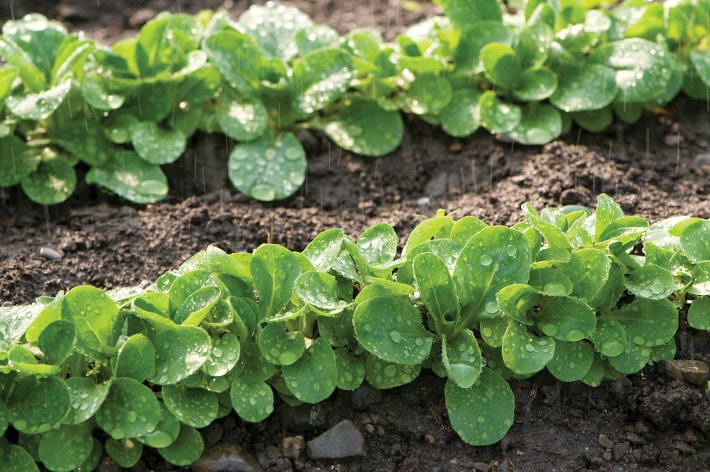
Lamb’s Lettuce, also known as Vit, Mâche, or “corn salad,” is a dainty, round-leafed green with a unique flavor and texture that make it a great addition to any salad. It looks like miniature spinach but has a nutty, tangy flavor that is unlike any other green. Lamb’s lettuce also has about three times as much vitamin C as traditional lettuce, making it a nutritious and delectable addition to your plate.
13. Leaf Lettuce
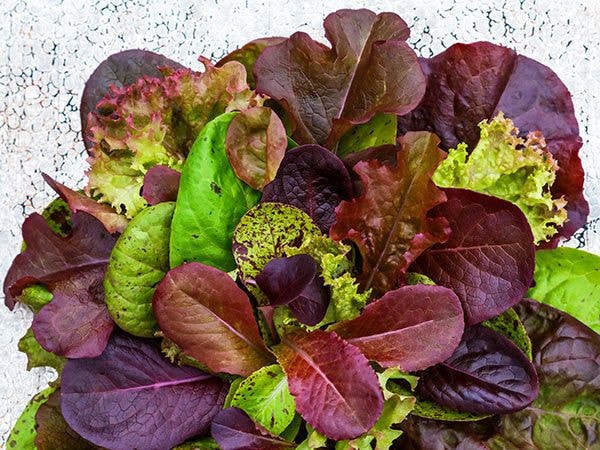
Leaf lettuce comes in a variety of different shapes and colors, and many of the varieties on this list are considered leaf lettuce. The thing they all have in common is that they grow in open bunches rather than tight heads. These open leaves tend to have curly or lacey edges and a thin, but slightly chewy texture. Curly red and green varieties have a mild flavor, while oak-leaf lettuce, which is shaped like an oak leaf, has a nuttier taste.
14. Little Gem Lettuce
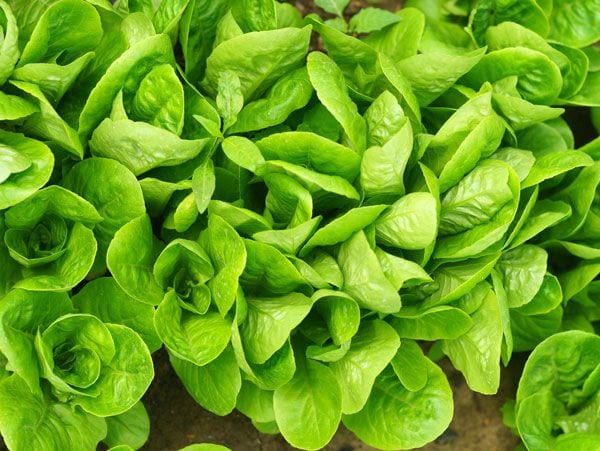
Little gem lettuce is a type of romaine. It has broad, deep green leaves that are savory and flavorful. It looks similar to butterhead, but with the crisper texture you would expect from romaine. Little gem makes a great topper for sandwiches and the perfect base or base-mix for salads.
15. Mesclun
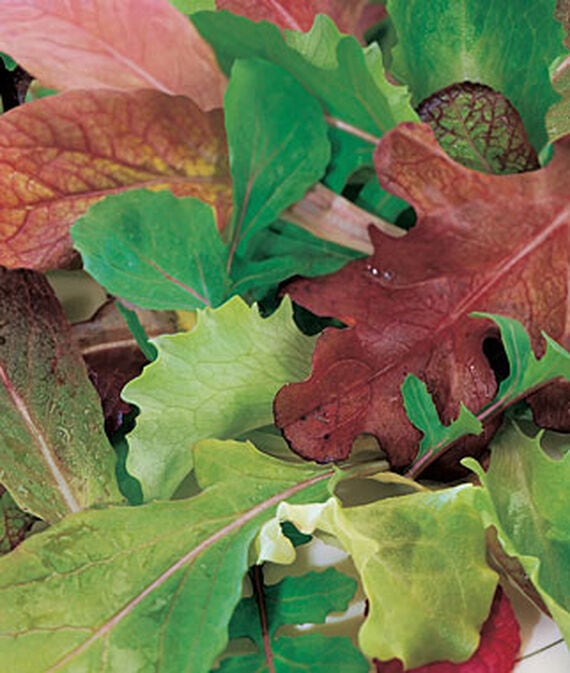
Mesclun isn’t actually a type of lettuce, but rather, a mix of different baby greens. Mesclun originated in France and was originally made up of baby arugula, chervil, endive, and leaf lettuce. Today, you can find mesclun mixes containing all types of baby greens from dandelion to radicchio. Using mesclun as your salad base is a great way to include a multitude of bold flavors without having to put much thought into it.
16. Mizuna
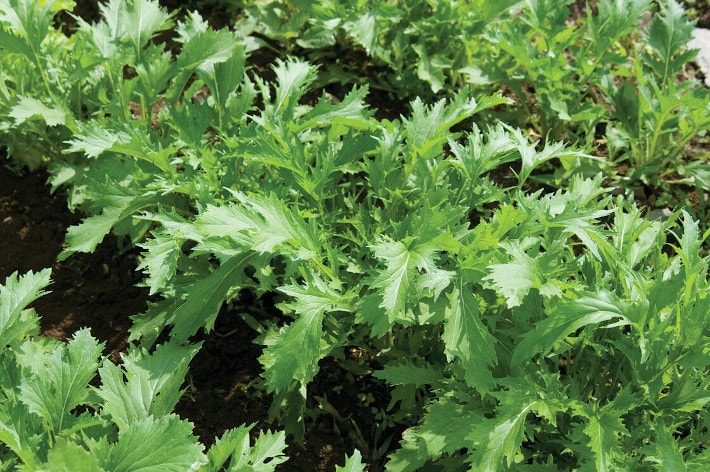
Mizuna is a green in the mustard family. It has an unmistakable look with deeply serrated, spikey leaves. It is harvested and eaten in both the immature baby form and larger mature form. The former is mild and tender, while the latter has a sharp, peppery taste. Like other leafy greens, mizuna is packed full of nutrients.
17. Oak Leaf Lettuce
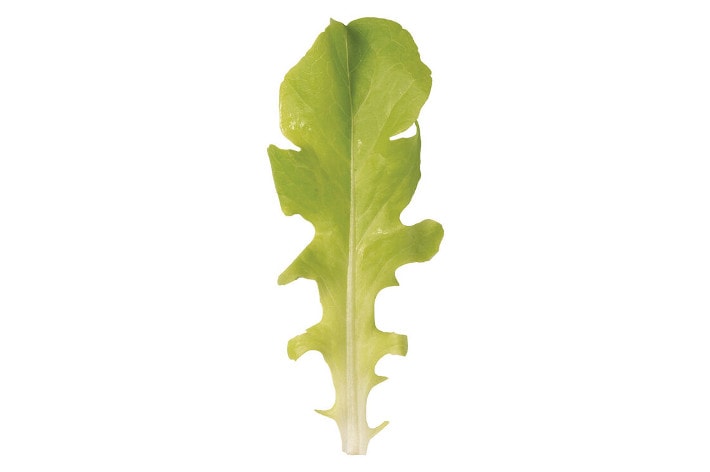
This member of the leaf lettuce tribe has unique leaves with rounded edges that resemble an oak leaf. They can be green, red, or a little of both. Unlike most leaf lettuce, which is mild and subtle, oak leaf brings a nuttier flavor and a slightly chewy texture.
18. Radicchio
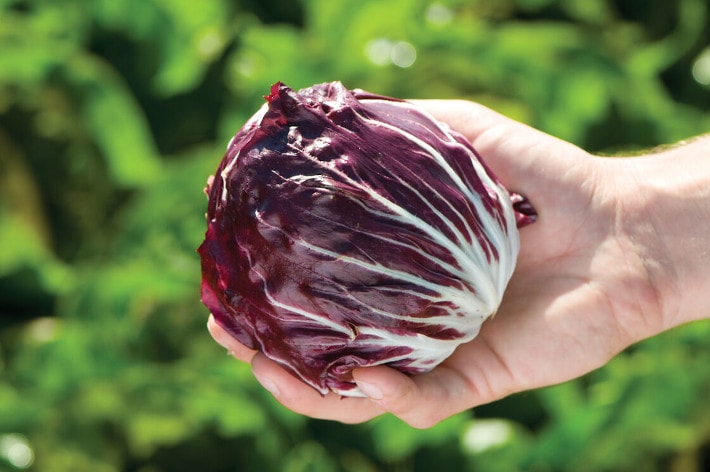
Radicchio looks very similar to red cabbage but is actually a member of the chicory family. It can grow in tight, elongated bunches similar to Belgian endive or round heads. It tends to be redder than cabbage, which typically verges on purple. While the texture is similar to its look-a-like, the flavor of Radicchio is zesty, spicy, and a bit bitter.
19. Romaine
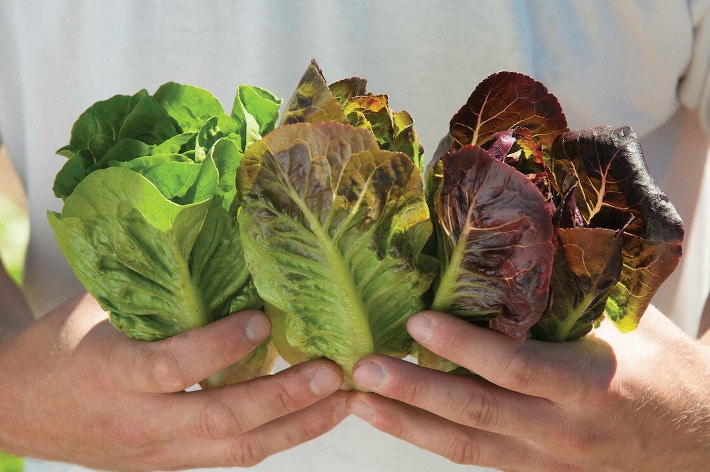
Also known as cos lettuce, romaine lettuce grows in tall, upright bunches of tightly packed leaves. Each leaf has a thick, crunchy stalk that runs up the center. The end of the leaf can be lacey or simply rounded. Romaine comes in all shades of green and red and has a mild flavor and pleasing, crunchy texture.
20. Tatsoi
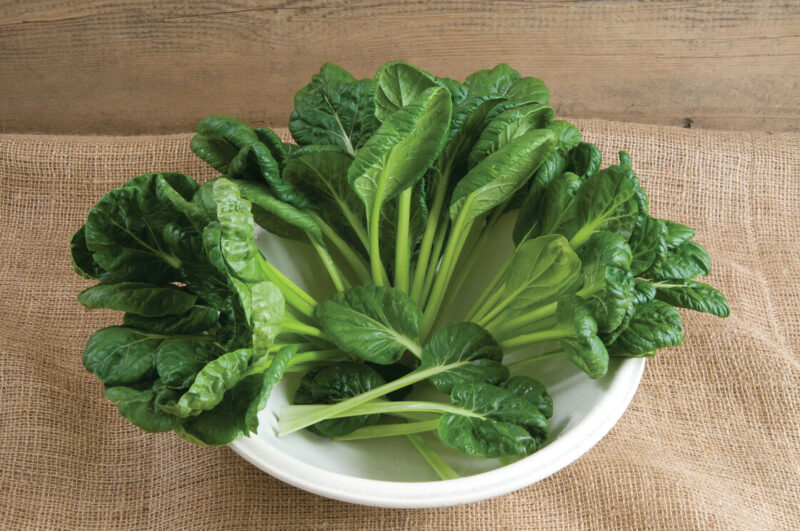
Tatsoi is closely related to the more popular bok choy. But unlike the latter, this green is tender enough to be eaten raw and makes for a great addition to salads. The leaves are thick like spinach and can be used in many of the same dishes. Tatsoi has a taste similar to romaine but with a slightly bitter, cucumber-like flavor noticeable in the stalks.
Lettuce Recipe Inspiration
Now that we’ve introduced you to some of our favorite different types of lettuce, here are a few inspirational salad recipes to try out this week.
- Easy Lettuce Wraps – A great dinner party appetizer since you can serve the lettuce and filling separately and everyone can assemble as they like.
- Chickpea & Cucumber Salad – Just about any of the above choices will make a great base for this tasty summer salad.
- Quinoa Salad with Lemon Vinaigrette – This flavorful, protein-packed salad recipe calls for red cabbage, but substituting radicchio will add a healthy dose of zesty spice.
- Simple Vegan Taco Salad – Iceberg lettuce adds a lot of crunch to this low-calorie take on the traditional taco salad. Butterhead lettuce would be another great option.
- Raspberry Vinaigrette over Artichoke Heart Salad – Here is another recipe that allows for a lot of variation in which greens you include. Start with a mesclun mix for added flavor or use mild romaine to keep the focus on the artichoke and raspberry vinaigrette.
With all this extra lettuce in the fridge, you’ll want to ensure you find a great way to store it, and be sure to get a good salad spinner to make prep work a breeze.
- How to Pick the Perfect Watermelon For a Sweet Summer Treat - April 10, 2024
- Future Kind’s Foundations: A Multivitamin Made for Vegans - December 5, 2023
- Does Nutritional Yeast Go Bad? - November 28, 2023

